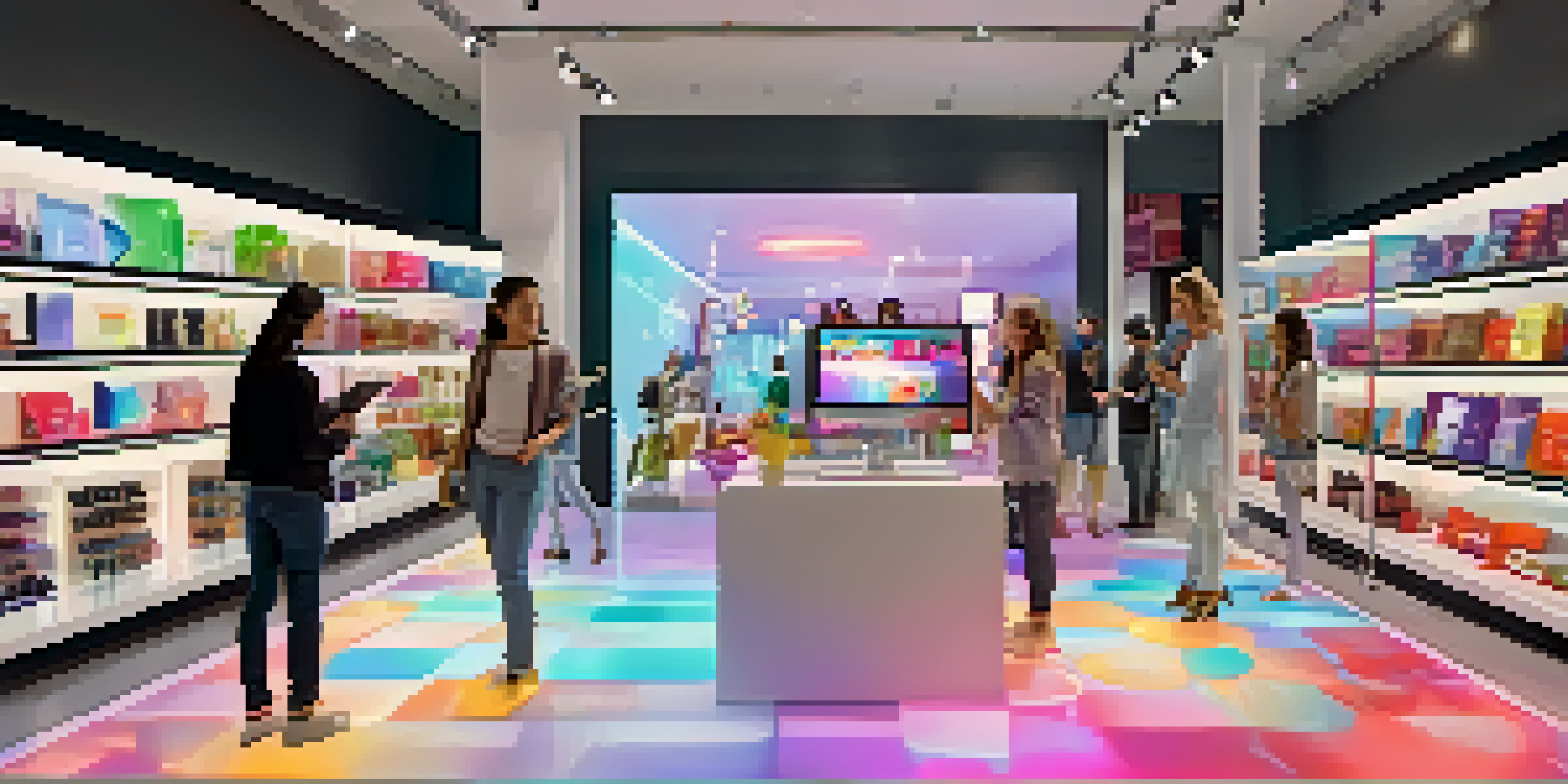Augmented Reality in Retail Events: Creating Memorable Experiences

Understanding Augmented Reality and Its Relevance in Retail
Augmented Reality (AR) is a technology that overlays digital information onto the real world. Imagine walking into a store and seeing 3D products pop up right in front of you—this is the magic of AR. In retail, AR creates an interactive experience that allows customers to engage with products in a unique way, enhancing their shopping journey.
Augmented reality offers a unique opportunity to combine the physical and digital worlds, creating a more engaging shopping experience.
The relevance of AR in retail is growing rapidly. As consumers increasingly seek out innovative experiences, businesses are turning to AR to stand out. It’s not just about selling products; it’s about creating memorable moments that resonate with customers long after they leave the store.
For instance, furniture retailers are using AR to help customers visualize how a piece might look in their own homes. By simply pointing their smartphone, shoppers can see a realistic representation of the furniture right in their living room, making the shopping experience both fun and practical.
Enhancing Customer Engagement Through Interactive Experiences
AR transforms passive shopping into an engaging adventure. Instead of just browsing through items, customers can interact with products in exciting ways. For instance, a beauty brand might allow customers to try on makeup virtually, giving them a chance to experiment without any commitment.

This level of engagement not only entertains but also builds a connection between the consumer and the brand. When customers can visualize and interact with products, they’re more likely to feel satisfied with their choices, leading to increased sales and brand loyalty.
AR Enhances Retail Customer Experience
Augmented Reality transforms shopping by allowing customers to interact with products in engaging and memorable ways.
Moreover, AR can foster social sharing. Imagine a group of friends trying on virtual outfits together and posting their experiences on social media. This not only creates a buzz around the brand but also encourages others to join the fun, expanding the reach of the retail event.
Creating Unique Brand Experiences with AR Technology
One of the most exciting aspects of AR is its ability to create unique brand experiences. Retailers can design custom experiences that align with their brand message, making each event special. For example, a sneaker brand might host an AR scavenger hunt, where participants use their phones to find hidden clues around the store.
The future of retail is about creating rich, immersive experiences that connect consumers to brands in meaningful ways.
These experiences not only entertain but also educate customers about the brand's history and values. When consumers engage with a brand in a memorable way, they’re more likely to develop a personal connection, which can lead to increased brand loyalty.
Additionally, unique AR experiences can set a brand apart from its competitors. In a crowded market, standing out can be challenging, but an innovative AR experience can capture attention and create lasting impressions.
Using AR to Provide Valuable Product Information
AR doesn’t just entertain; it also informs. Retailers can use AR to provide customers with detailed product information that enhances their understanding and confidence in their purchases. For instance, scanning a product with an app might reveal its materials, care instructions, and even styling tips.
This instant access to information empowers customers to make informed decisions. They no longer have to rely solely on sales staff or product labels; they can explore everything they need at their fingertips. This transparency builds trust between the brand and the consumer.
AR Enhances Retail Shopping Experience
Augmented Reality transforms the shopping journey by allowing customers to interact with products in engaging and memorable ways.
Moreover, AR can help customers visualize complex products. For instance, tech retailers can use AR to demonstrate how a gadget works, showcasing its features in a way that's easy to grasp, ensuring customers leave with a clear understanding of their purchase.
Leveraging Social Media Integration for Amplified Reach
Integrating AR with social media can amplify a retail event's reach significantly. Many AR experiences encourage users to share their adventures on platforms like Instagram and TikTok. When customers share their AR interactions, it creates organic buzz around the brand.
For instance, a clothing retailer might encourage customers to post their virtual try-ons with a branded hashtag. This not only showcases the fun of the shopping experience but also creates a community around the brand, as followers engage with the content.
Additionally, social media platforms are increasingly incorporating AR features themselves, making it easier for brands to create immersive experiences. By tapping into these tools, retailers can seamlessly blend their events into the digital landscape, reaching a wider audience.
The Role of Data and Analytics in AR Retail Strategies
Data and analytics play a crucial role in refining AR strategies for retail events. By tracking user interactions, retailers can gain insights into what resonates with their audience. For example, if a particular AR feature sees high engagement, businesses can focus more on similar experiences in the future.
Moreover, analyzing data helps retailers understand customer preferences and behaviors. This information can be invaluable for tailoring offers and enhancing product ranges, making future events even more successful.
Unique Brand Experiences Drive Loyalty
Custom AR experiences help retailers create memorable interactions that foster personal connections and increase brand loyalty.
Retailers can also use data to measure the effectiveness of their AR campaigns. By understanding what drives sales or increases engagement, they can continuously improve their strategies and ensure they meet customer expectations.
Future Trends: The Evolution of AR in Retail Events
The future of AR in retail events looks incredibly promising. As technology advances, we can expect even more immersive and interactive experiences. Imagine AR glasses that provide real-time information about products as you browse the store, enhancing the shopping experience even further.
Additionally, the integration of AR with artificial intelligence could lead to personalized shopping experiences. For instance, an AI could analyze past purchases and suggest AR experiences tailored to individual preferences, making every shopping journey unique.

As more retailers adopt AR, we may also see a shift in consumer expectations. Customers will likely come to expect these high-tech experiences as the norm, pushing brands to innovate continually to keep their audience engaged.